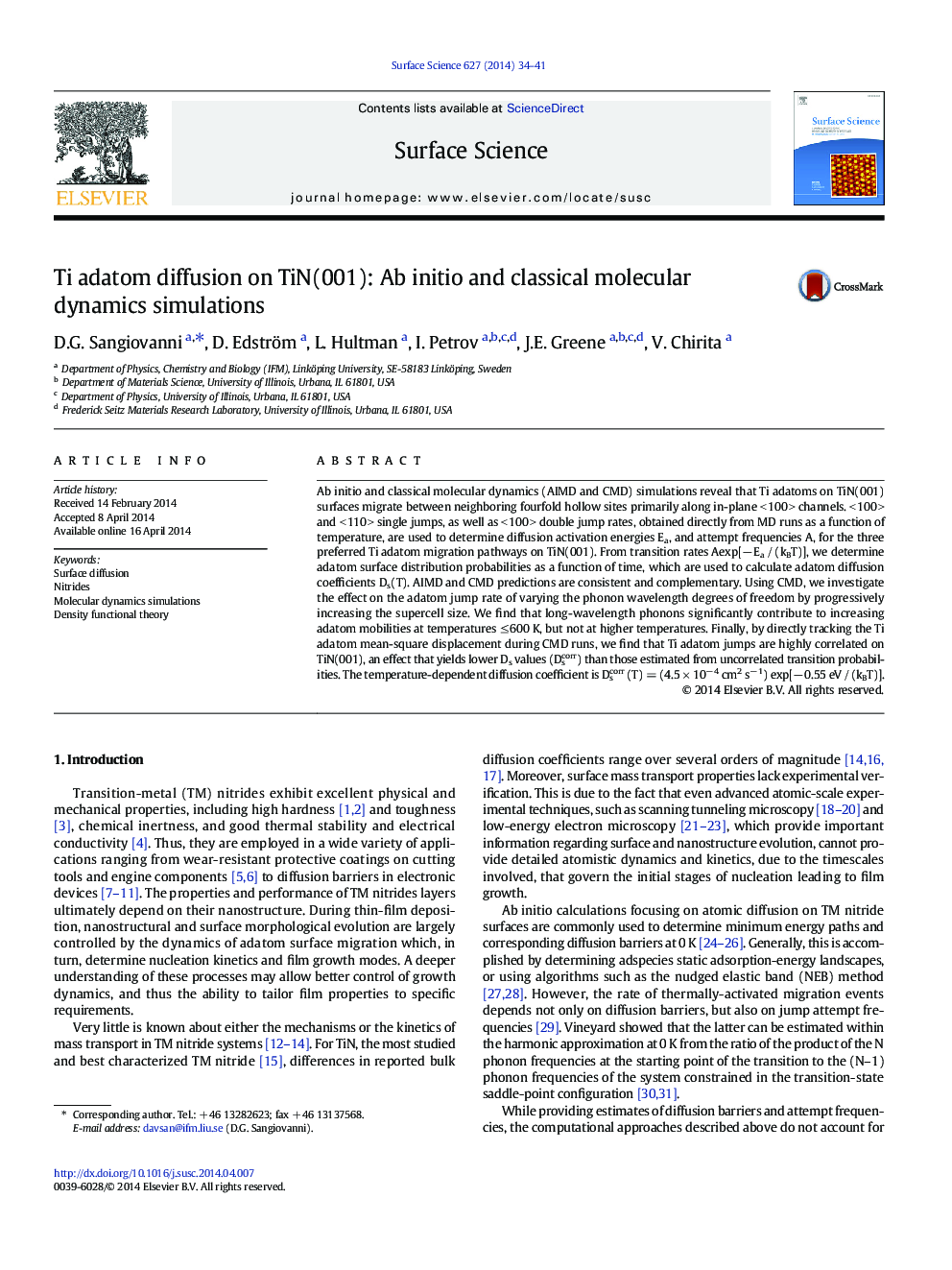| Article ID | Journal | Published Year | Pages | File Type |
|---|---|---|---|---|
| 5422073 | Surface Science | 2014 | 8 Pages |
â¢Ti migrates between stable TiN(001) surface sites primarily along < 100 > directions.â¢Long wavelength phonons significantly increase Ti adatom mobilities at T ⤠600 K.â¢Ti adatom jumps are highly correlated on TiN(001); this lowers the diffusivity.â¢Ti/TiN(001) surface diffusion: D(T) = (0.00045 cm2s-1) exp[-(0.55 eV)/(kBT)].
Ab initio and classical molecular dynamics (AIMD and CMD) simulations reveal that Ti adatoms on TiN(001) surfaces migrate between neighboring fourfold hollow sites primarily along in-plane < 100 > channels. < 100 > and < 110 > single jumps, as well as < 100 > double jump rates, obtained directly from MD runs as a function of temperature, are used to determine diffusion activation energies Ea, and attempt frequencies A, for the three preferred Ti adatom migration pathways on TiN(001). From transition rates Aexp[â Ea / (kBT)], we determine adatom surface distribution probabilities as a function of time, which are used to calculate adatom diffusion coefficients Ds(T). AIMD and CMD predictions are consistent and complementary. Using CMD, we investigate the effect on the adatom jump rate of varying the phonon wavelength degrees of freedom by progressively increasing the supercell size. We find that long-wavelength phonons significantly contribute to increasing adatom mobilities at temperatures â¤Â 600 K, but not at higher temperatures. Finally, by directly tracking the Ti adatom mean-square displacement during CMD runs, we find that Ti adatom jumps are highly correlated on TiN(001), an effect that yields lower Ds values (Dscorr) than those estimated from uncorrelated transition probabilities. The temperature-dependent diffusion coefficient is Dscorr (T) = (4.5 Ã 10â 4 cm2 sâ 1) exp[â 0.55 eV / (kBT)].
